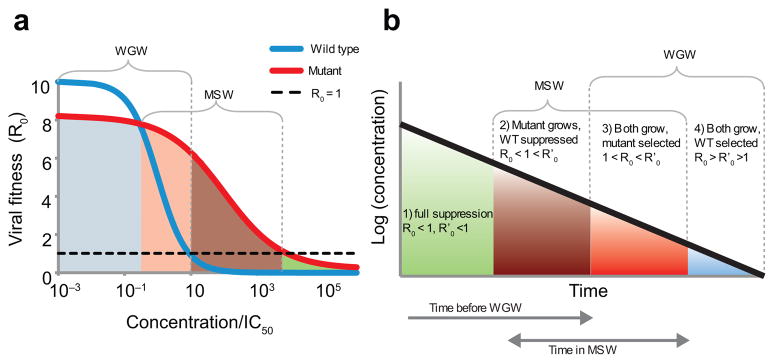Figure 1.
Drug concentrations determine the relative fitness of the wild-type virus and a resistant mutant. (a) The fitness of the wild-type virus (R0, blue line) decreases with increasing drug concentration, following Equation (1). A drug-resistant strain (R′0, red line) is less fit than the wild type at low concentrations, but more fit at higher concentrations due to an increased IC50 or a reduced slope. The mutant selection window (MSW) is the range of concentrations where a resistant mutant, if present, will grow faster than the wild type and still has R′0> 1. The wild-type growth window (WGW) is the range of low concentrations where the wild type has R0> 1, leading to treatment failure without the need for resistance. For drug concentrations in the overlapping range of these windows, virologic failure (VF) can occur even without resistance, but will be hastened by the appearance of a faster-growing mutant. (b) As drug concentrations decay after the last dose is taken, the viral fitness passes through the four different selection ranges. Depending on the drug, dose level, and mutation, not all of these ranges may exist. The time spent in each selection window is also determined by the drug half-life.

